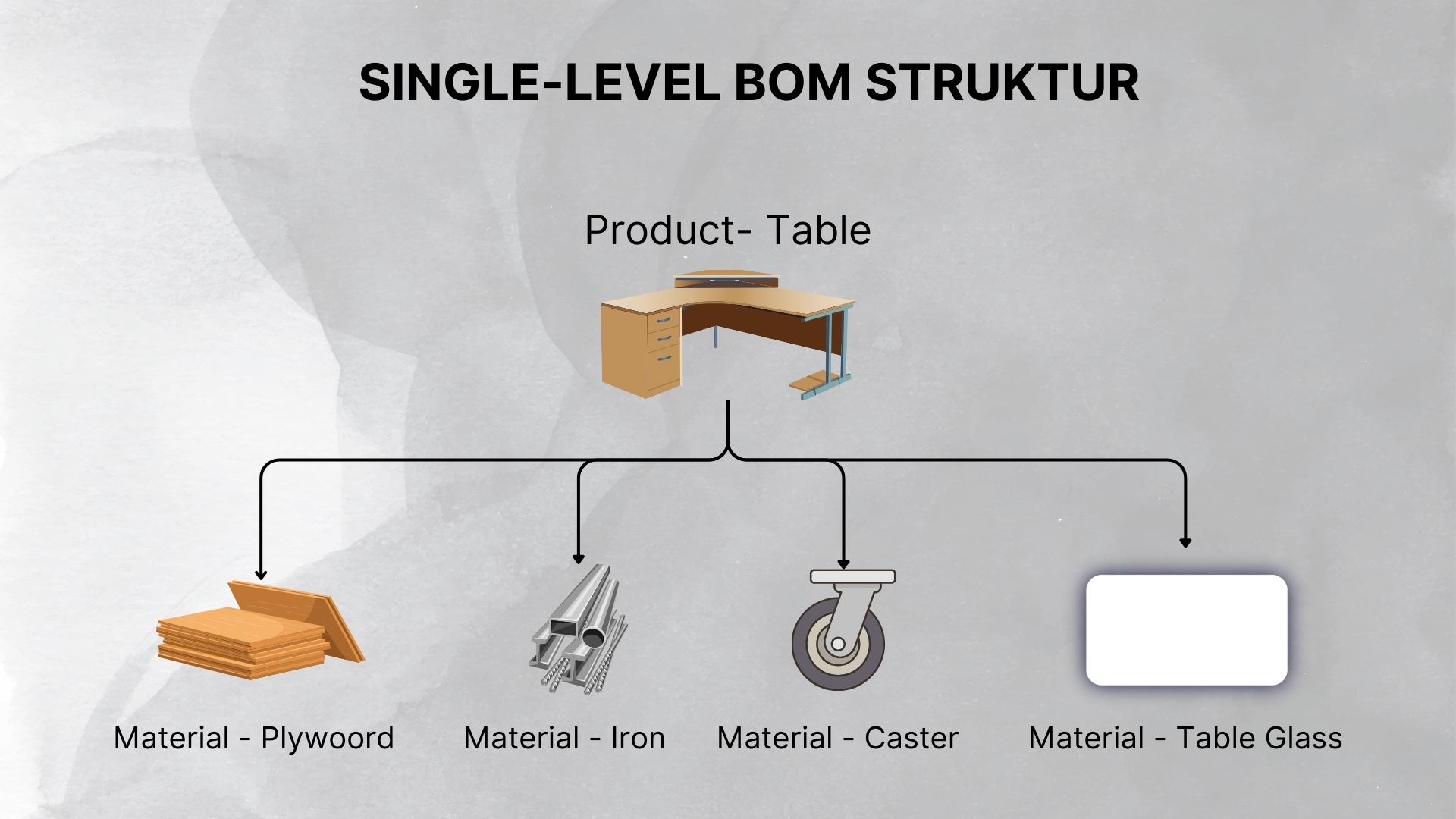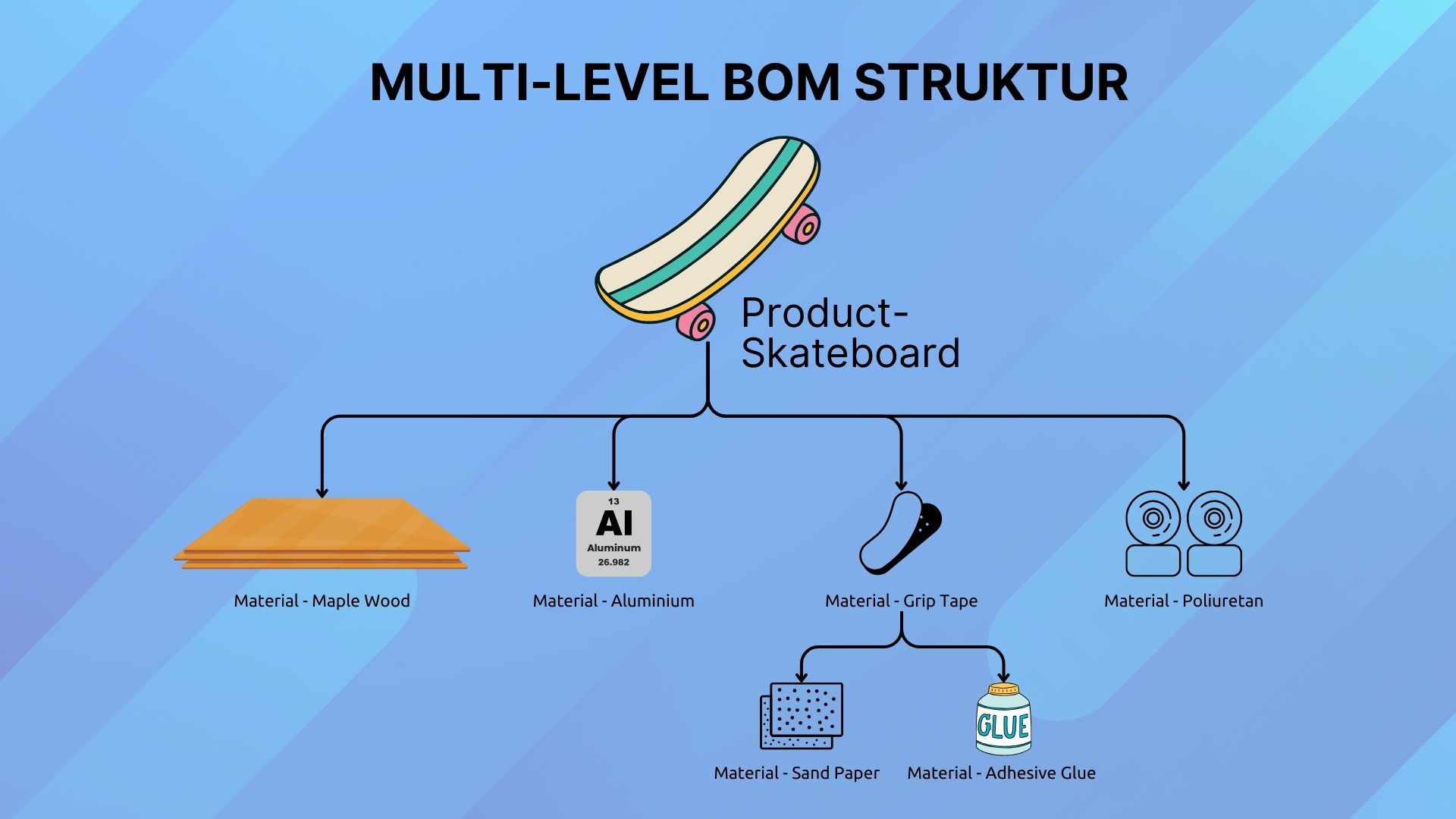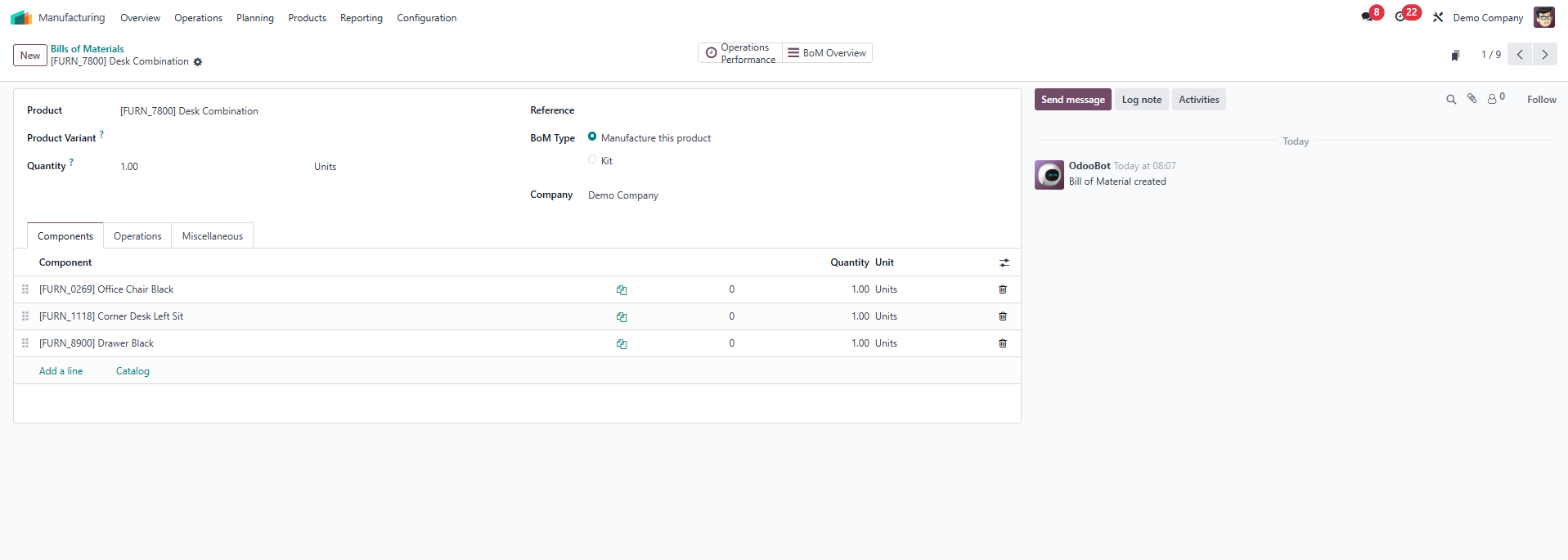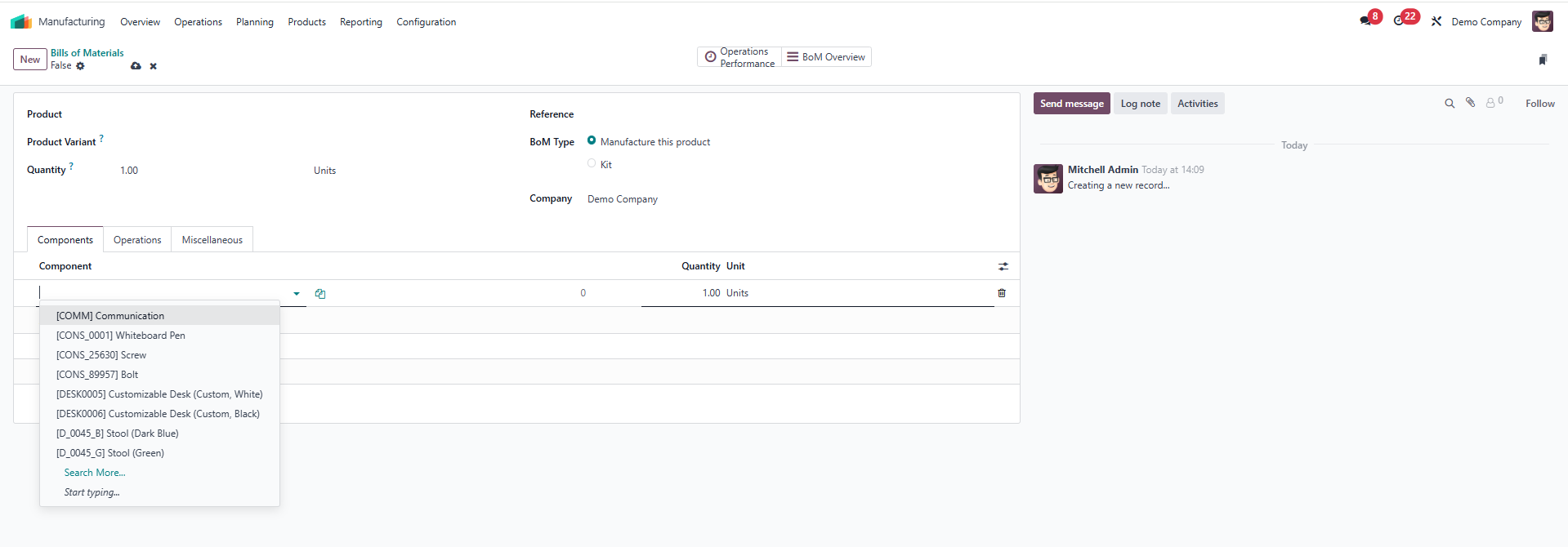The Bill of Materials (BOM) is an essential inventory blueprint for manufacturers. This guide will help you understand the different types of BOMs, the differences between single-level and multi-level BOMs, and the benefits of using BOM software. You will also be guided through the process of creating a BOM, the important elements that must be included, and how to choose the right BOM system to suit your manufacturing needs. This guide also includes practical examples, free templates, and professional advice to improve your production efficiency.
List of contents
- Bill of Materials (BOM) Definition
- Types of Bill of Materials
- Difference between Single Tier vs Multi Tier BOM
- Bill of Materials Example
- Five Benefits of Using BOM Software
- Choosing the Right BOM Software
- Odoo is the Best BOM Software Solution
1. Definition of Bill of Materials (BOM)
BOM or Bill of Materials is a complete list of raw materials, assemblies, sub-assemblies, parts, and components required and their quantities to make a finished product. The BOM provides detailed instructions on how to assemble the product and is very important in production planning and optimization.

2. Types of Bill of Materials
Several types of BOM are used according to needs and industrial sectors:
a. Engineering Bill of Materials (EBOM).
The EBOM reflects the product design as designed by the engineering team. This BOM includes all parts and assemblies necessary to complete the design, including technical specifications such as part numbers and descriptions.
b. Manufacturing Bill of Materials (MBOM)
Also known as Production BOM, MBOM reflects how the product will be produced. This BOM includes all parts and assemblies required in the manufacturing process, including production instructions, work centers, preferred suppliers, and production costs.
c. Sales Bill of Materials (SBOM)
SBOM reflects the product as sold, including finished goods and additional or optional components that the customer can select.
d. Service Bill of Materials (Service BOM)
This BOM is used for service and maintenance purposes and includes spare parts, service kits, and other components required for product repair after sale.
e. Configurable Bill of Materials (CBOM)
CBOM is used in manufacturing products that can be configured based on customer orders. This BOM allows high flexibility in the customization of the final product.
3. Difference between Single Level vs Multi-Level BOM
The BOM structure plays an important role in organizing the production process.
a. One Level BOMB
A single-level BOM is a simple representation of the components required to assemble a product. This structure shows the direct relationship between the final product and its major components but does not describe the details of the sub-assemblies.
Example: A work desk consists of four main components. In a single-level BOM, it is not explained how each component is made or assembled.

b. Multi-Level BOM
Multi-level BOMs are more complex because they list each component down to the raw material level.
Example: In skateboard assembly, the deck consists of multiple layers of materials that require separate purchase and assembly. Multi-level BOMs provide more detailed information about each layer of assembly, assisting in planning, cost control, and production schedules.

4. Bill of Materials Example (BOM)
If you're not already using a manufacturing planning (MRP) system, you're likely using spreadsheets to manage your BOM. An effective BOM structure usually includes:
- Item number
- Part number
- Description
- Quantity
- Material
- Unit of measurement
- Cost per unit
- Total cost
- Assembly stage
- Parent item
We also provide BOM templates in Excel format that can be downloaded for free.
5. Five Benefits of Using BOM Software
- Avoiding Material Shortages: Ensure materials are available according to production needs.
- Accurate Production Time Estimates: Makes it easier to schedule and manage raw material delivery times.
- Improve Accuracy: Reduce errors in material calculations and assembly processes.
- Better Internal Collaboration: Enables centralized data access by various departments.
- Improve Audit Trail: Track material usage and compliance with industry standards.
6. Choosing the Right BOM Software
In selecting BOM software, consider the following factors:
- Functionality: Make sure the software supports multi-level BOMs, integration with CAD, as well as change tracking.
- Ease of Use: An intuitive interface will accelerate adoption within the enterprise.
- Integration: The system must be able to connect with ERP, MRP, or CAD for maximum efficiency.
- Scalability: Choose a system that can grow with your business.
- Cost: Consider initial costs as well as maintenance and technical support costs.
- Technical Support: Make sure the vendor provides support that is responsive and appropriate for your time zone.
- Vendor Reputation: See reviews from other users on platforms like Capterra and G2.
- Customization Capabilities: Make sure the software can be adapted to your business processes.
- Regulatory Compliance: If your business has specific security requirements, ensure the software meets the required standards.
By understanding and implementing BOM well, your manufacturing business can increase operational efficiency, reduce costs, and ensure production processes run smoothly.
7. Odoo as the Best BOM Software Solution
Odoo is one of the best software solutions for managing BOM with complete features and easy to use. Here are some of the main features of BOM in Odoo:
BOM Features in Odoo:
- Multi-level BOM: Allows the creation of tiered BOMs down to raw materials.
- Integration with Production Module: Automatically connected to the production process.
- Automated Inventory Management: Synchronize raw material stocks with production needs.
- Tracking and Tracking Changes: Monitor BOM changes with audit logs.
- Work Order Creation Automation: Generate work orders based on the BOM that has been created.

Advantages of Using BOM in Odoo:
- Production Efficiency: With workflow automation, production time can be reduced significantly.
- Integration with Other Systems: Odoo is connected to ERP, CRM, and accounting modules so that all business processes run more efficiently.
- High Scalability: Suitable for use by small-scale businesses to large companies.
- User-friendly Interface: Makes it easier for users to manage BOMs without the need for high technical expertise.
- Improve Data Accuracy: Avoid recording errors in planning and production.

Why Should You Use Odoo BOM?
- Flexibility and Ease of Use: Odoo has an intuitive and easy-to-use interface.
- Multi-level BOM support: Suitable for manufacturers that have many sub-assemblies in their products.
- Connectivity with Other Modules: No need for additional integration as all modules are already available in the Odoo ecosystem.
- Operational Efficiency: Production processes can be designed more effectively with better material management.
- Accurate Data Analysis: A complete and in-depth report helps in decision-making.

Conclusion
Choosing the right BOM software is critical to increasing efficiency and accuracy in the manufacturing process. In this article, we've discussed the different types of BOMs, the differences between single-level and multi-level BOMs, and the benefits of using BOM software.
Odoo is the best solution for managing BOM because of its complete features, ease of use, and integration with other modules. With Odoo, manufacturing businesses can optimize production processes, increase operational efficiency, and reduce errors in material planning.
If you are looking for a BOM solution that is reliable and integrated with an ERP system, Odoo is the right choice to help your business grow better!